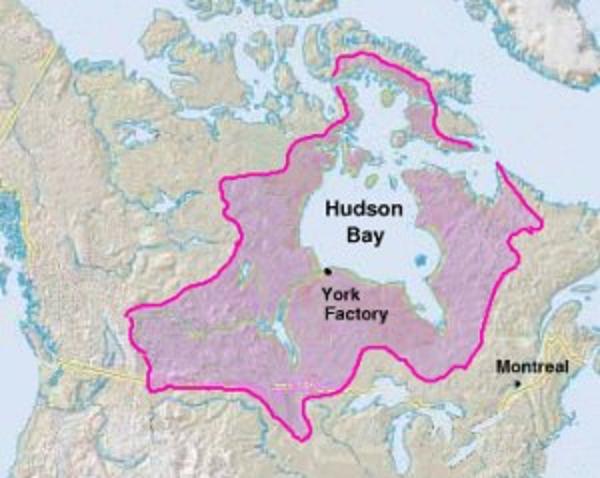After Great Britain emerged victorious in the French and Indian War, a clash with France over territory in North America, in 1763, it faced a difficult task: managing Quebec, a sprawling former French colony where the Catholic majority had little in common with their new Protestant rulers.
To heal the wounds of the war and streamline governance, the British Parliament passed the Quebec Act in 1774. The legislation’s compromises were significant. The criminal law code became British, while civil and property law in the province continued to follow the French model.
The act largely preserved Quebec’s feudal land distribution system, and it allowed residents the right to freely practice “the religion of the Church of Rome,” so long as they stayed loyal foremost to Britain’s king, George III.
The act’s most controversial reform, however, was expanding the official boundary of Quebec to the Ohio River Valley, which conflicted with prominent American colonists’ property interests and their hopes of expanding on the Western frontier.
Many residents of the lower Thirteen Colonies took the Quebec Act as yet another instance of “ministerial tyranny” akin to the Coercive Acts, which were passed that same year to punish Massachusetts for the Boston Tea Party and other incidents of unrest in the city.
The delegates of the First Continental Congress wholeheartedly condemned the Quebec Act—and Quebec itself—in September 1774 as “dangerous in an extreme degree to the Protestant religion and to the civil rights and liberties of all America.” (Wizevich, Smithsonian)
On about September 14, 1775. George Wasington delivered an address “To the Inhabitants of Canada”.
“Friends and Brethren,”
“The unnatural Contest between the English Colonies and Great-Britain, has now risen to such a Heighth, that Arms alone must decide it. The Colonies, confiding in the Justice of their Cause, and the Purity of their Intentions, have reluctantly appealed to that Being, in whose Hands are all human Events.”
“He has hitherto smiled upon their virtuous Efforts—The Hand of Tyranny has been arrested in its Ravages, and the British Arms which have shone with so much Splendor in every Part of the Globe, are now tarnished with Disgrace and Disappointment.—”
“Generals of approved Experience, who boasted of subduing this great Continent, find themselves circumscribed within the Limits of a single City and its Suburbs, suffering all the Shame and Distress of a Siege.”
“While the trueborn Sons of America, animated by the genuine Principles of Liberty and Love of their Country, with increasing Union, Firmness and Discipline repel every Attack, and despise every Danger.”
“Above all, we rejoice, that our Enemies have been deceived with Regard to you—They have perswaded themselves, they have even dared to say, that the Canadians were not capable of distinguishing between the Blessings of Liberty, and the Wretchedness of Slavery; that gratifying the Vanity of a little Circle of Nobility—would blind the Eyes of the People of Canada.—”
“By such Artifices they hoped to bend you to their Views, but they have been deceived, instead of finding in you that Poverty of Soul, and Baseness of Spirit, they see with a Chagrin equal to our Joy, that you are enlightned, generous, and virtuous—that you will not renounce your own Rights, or serve as Instruments to deprive your Fellow Subjects of theirs.—”
“Come then, my Brethren, unite with us in an indissoluble Union, let us run together to the same Goal.—We have taken up Arms in Defence of our Liberty, our Property, our Wives, and our Children, we are determined to preserve them, or die.”
“We look forward with Pleasure to that Day not far remote (we hope) when the Inhabitants of America shall have one Sentiment, and the full Enjoyment of the Blessings of a free Government.”
“Incited by these Motives, and encouraged by the Advice of many Friends of Liberty among you, the Grand American Congress have sent an Army into your Province, under the Command of General Schuyler; not to plunder, but to protect you; to animate, and bring forth into Action those Sentiments of Freedom you have disclosed, and which the Tools of Despotism would extinguish through the whole Creation.—”
“To co-operate with this Design, and to frustrate those cruel and perfidious Schemes, which would deluge our Frontiers with the Blood of Women and Children; I have detached Colonel Arnold into your Country, with a Part of the Army under my Command—”
“I have enjoined upon him, and I am certain that he will consider himself, and act as in the Country of his Patrons, and best Friends. Necessaries and Accommodations of every Kind which you may furnish, he will thankfully receive, and render the full Value.—”
“I invite you therefore as Friends and Brethren, to provide him with such Supplies as your Country affords; and I pledge myself not only for your Safety and Security, but for ample Compensation. Let no Man desert his Habitation—Let no one flee as before an Enemy.”
“The Cause of America, and of Liberty, is the Cause of every virtuous American Citizen; whatever may be his Religion or his Descent, the United Colonies know no Distinction but such as Slavery, Corruption and arbitrary Domination may create.”
“Come then, ye generous Citizens, range yourselves under the Standard of general Liberty—against which all the Force and Artifice of Tyranny will never be able to prevail. G. Washington.” (National Archives)
On New Year’s Eve, 1775, Colonists stormed Quebec City. Of the roughly 500 soldiers in the contingent, 35 were killed, 33 were wounded and 372 were captured in the failed assault. (Wizevich, Smithsonian)

































